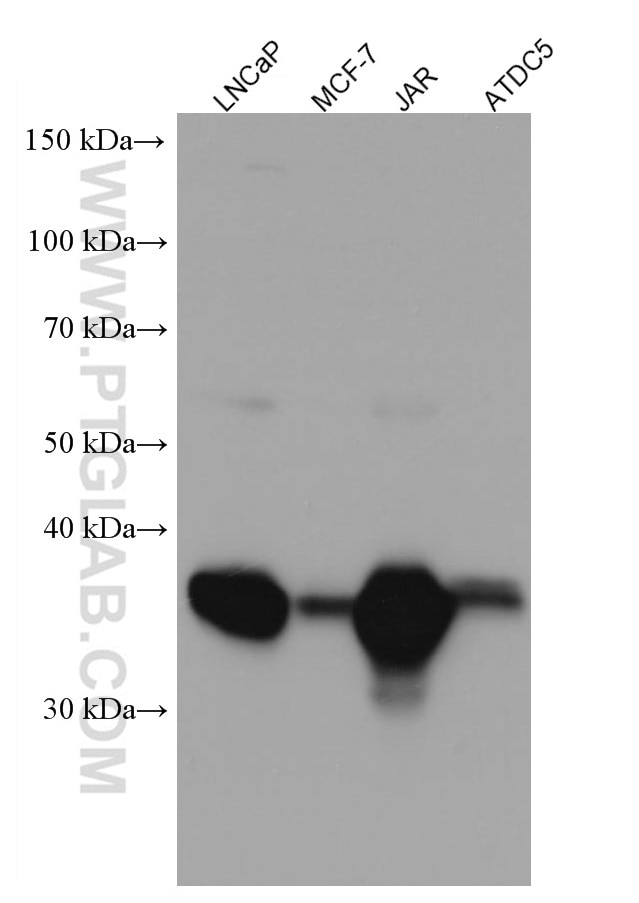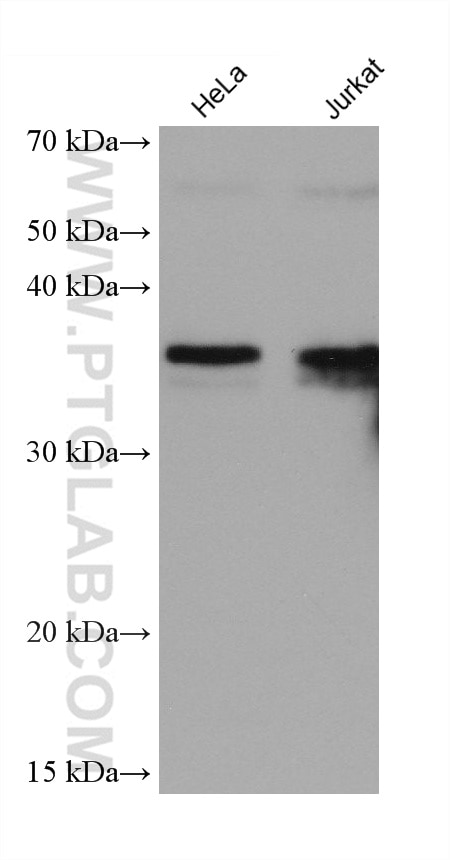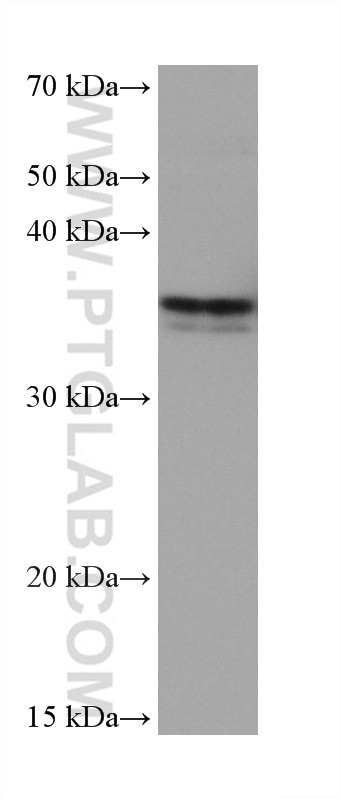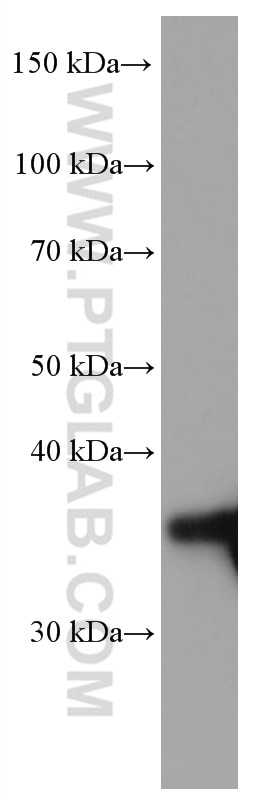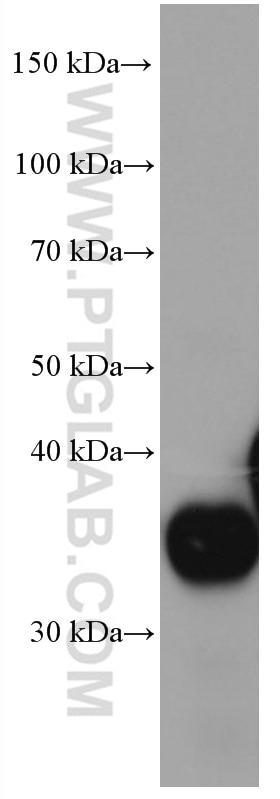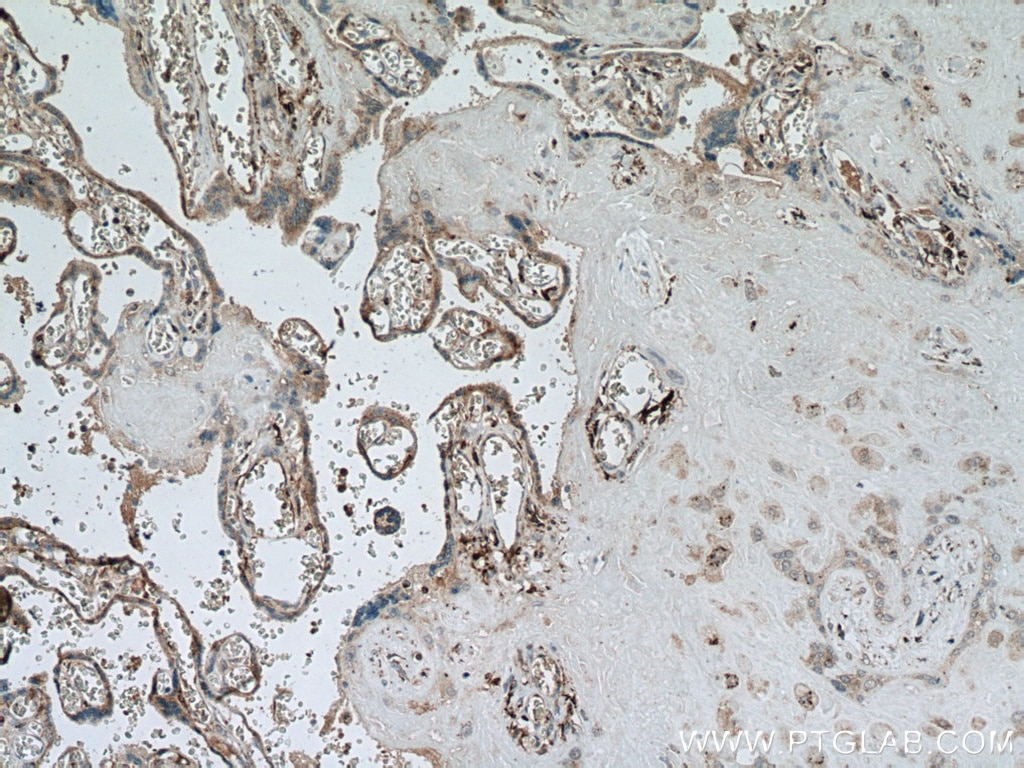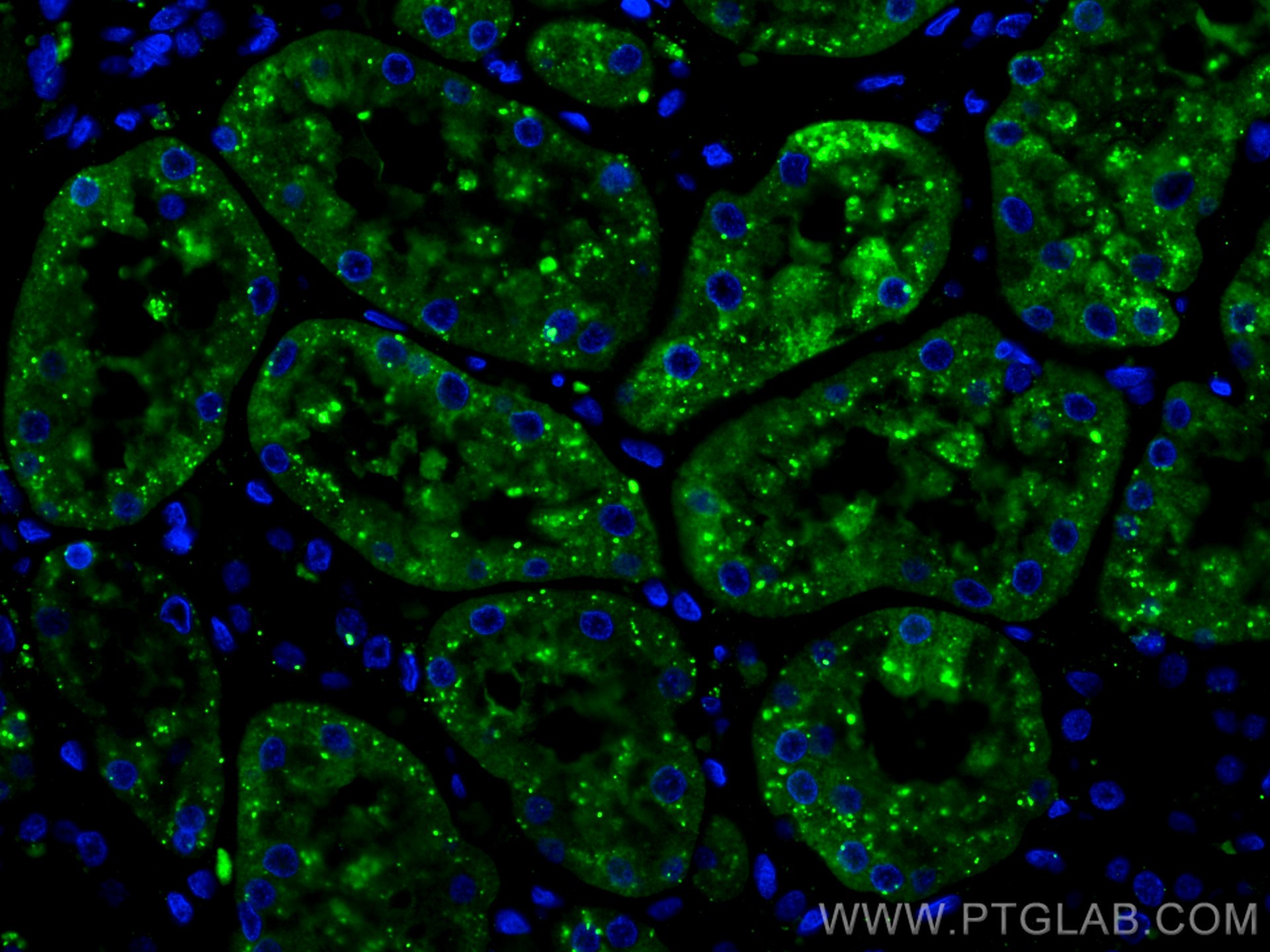Anticorps Monoclonal anti-LGMN
LGMN Monoclonal Antibody for IF, IHC, WB, ELISA
Hôte / Isotype
Mouse / IgG1
Réactivité testée
Humain, porc, souris
Applications
WB, IHC, IF, ELISA
Conjugaison
Non conjugué
CloneNo.
1F2B12
N° de cat : 67017-1-Ig
Synonymes
Galerie de données de validation
Applications testées
| Résultats positifs en WB | SK-BR-3 cells, cellules ATDC-5, cellules HEK-293, cellules HeLa, cellules JAR, cellules Jurkat, cellules LNCaP, cellules MCF-7, cellules NCCIT, tissu placentaire humain, tissu rénal de porc |
| Résultats positifs en IHC | tissu rénal humain, tissu placentaire humain il est suggéré de démasquer l'antigène avec un tampon de TE buffer pH 9.0; (*) À défaut, 'le démasquage de l'antigène peut être 'effectué avec un tampon citrate pH 6,0. |
| Résultats positifs en IF | tissu rénal humain, |
Dilution recommandée
| Application | Dilution |
|---|---|
| Western Blot (WB) | WB : 1:5000-1:50000 |
| Immunohistochimie (IHC) | IHC : 1:150-1:600 |
| Immunofluorescence (IF) | IF : 1:200-1:800 |
| It is recommended that this reagent should be titrated in each testing system to obtain optimal results. | |
| Sample-dependent, check data in validation data gallery | |
Applications publiées
| KD/KO | See 1 publications below |
| WB | See 4 publications below |
| IHC | See 2 publications below |
Informations sur le produit
67017-1-Ig cible LGMN dans les applications de WB, IHC, IF, ELISA et montre une réactivité avec des échantillons Humain, porc, souris
| Réactivité | Humain, porc, souris |
| Réactivité citée | Humain, souris |
| Hôte / Isotype | Mouse / IgG1 |
| Clonalité | Monoclonal |
| Type | Anticorps |
| Immunogène | LGMN Protéine recombinante Ag7218 |
| Nom complet | legumain |
| Masse moléculaire calculée | 49 kDa |
| Poids moléculaire observé | 36 kDa |
| Numéro d’acquisition GenBank | BC003061 |
| Symbole du gène | LGMN |
| Identification du gène (NCBI) | 5641 |
| Conjugaison | Non conjugué |
| Forme | Liquide |
| Méthode de purification | Purification par protéine G |
| Tampon de stockage | PBS avec azoture de sodium à 0,02 % et glycérol à 50 % pH 7,3 |
| Conditions de stockage | Stocker à -20°C. Stable pendant un an après l'expédition. L'aliquotage n'est pas nécessaire pour le stockage à -20oC Les 20ul contiennent 0,1% de BSA. |
Informations générales
LGMN (Legumain), also known as asparaginyl endopeptidase or AEP, is a broadly expressed lysosomal cysteine endopeptidase that belongs to peptidase family C13 and specifcally hydrolyzes substrate asparaginyl bonds (PMID: 9065484). LGMN directly regulates diverse physiological and pathological processes by remodeling tissue-specific targets (PMID: 25205715, 21292981, 18820679). In addition, LGMN indirectly contributes to atherosclerotic plaque instability through activation of cathepsin L in the arterial ECM (PMID: 19671471, 18377911). LGMN is secreted as inactive prolegumain (56 kDa) and processed into enzymatically active 46 and 36 kDa forms, as well as a 17 kDa enzymatically inactive C-terminal fragment (PMID: 28162997, PMID: 19671471).
Protocole
| Product Specific Protocols | |
|---|---|
| WB protocol for LGMN antibody 67017-1-Ig | Download protocol |
| IHC protocol for LGMN antibody 67017-1-Ig | Download protocol |
| IF protocol for LGMN antibody 67017-1-Ig | Download protocol |
| Standard Protocols | |
|---|---|
| Click here to view our Standard Protocols |
Publications
| Species | Application | Title |
|---|---|---|
J Control Release A "dual-guide" bioinspired drug delivery strategy of a macrophage-based carrier against postoperative triple-negative breast cancer recurrence. | ||
Int J Pharm Macrophage-mediated multi-mode drug release system for photothermal combined with anti-inflammatory therapy against postoperative recurrence of triple negative breast cancer. | ||
Int J Biol Sci Legumain Promotes Gastric Cancer Progression Through Tumor-associated Macrophages In vitro and In vivo. | ||
Exp Eye Res Legumain affects the PI3K/AKT tumor progression pathway in retinoblastoma
| ||
J Mol Neurosci The Heterogeneity of Tumour-Associated Macrophages Contributes to the Recurrence and Outcomes of Glioblastoma Patients |

